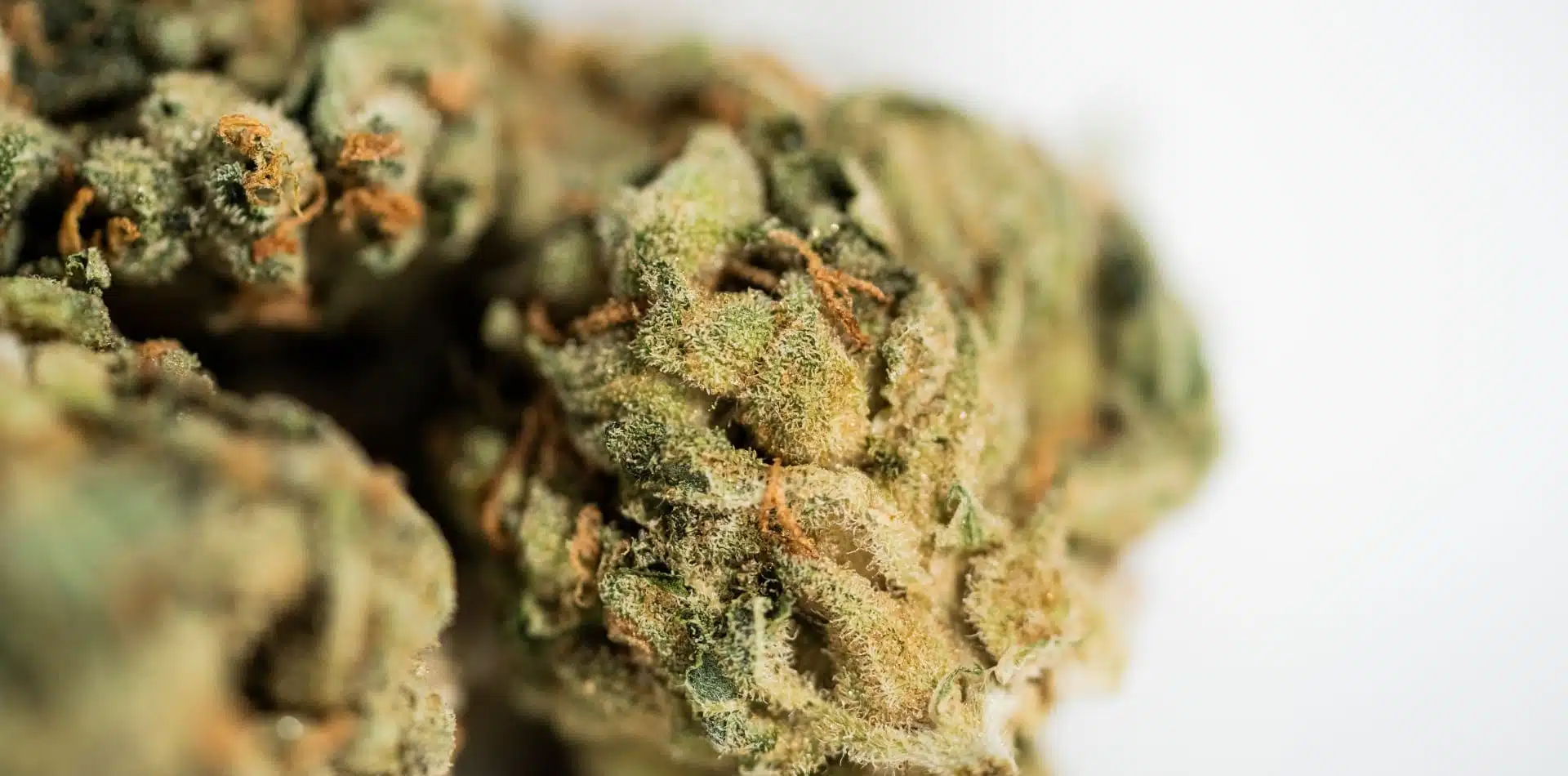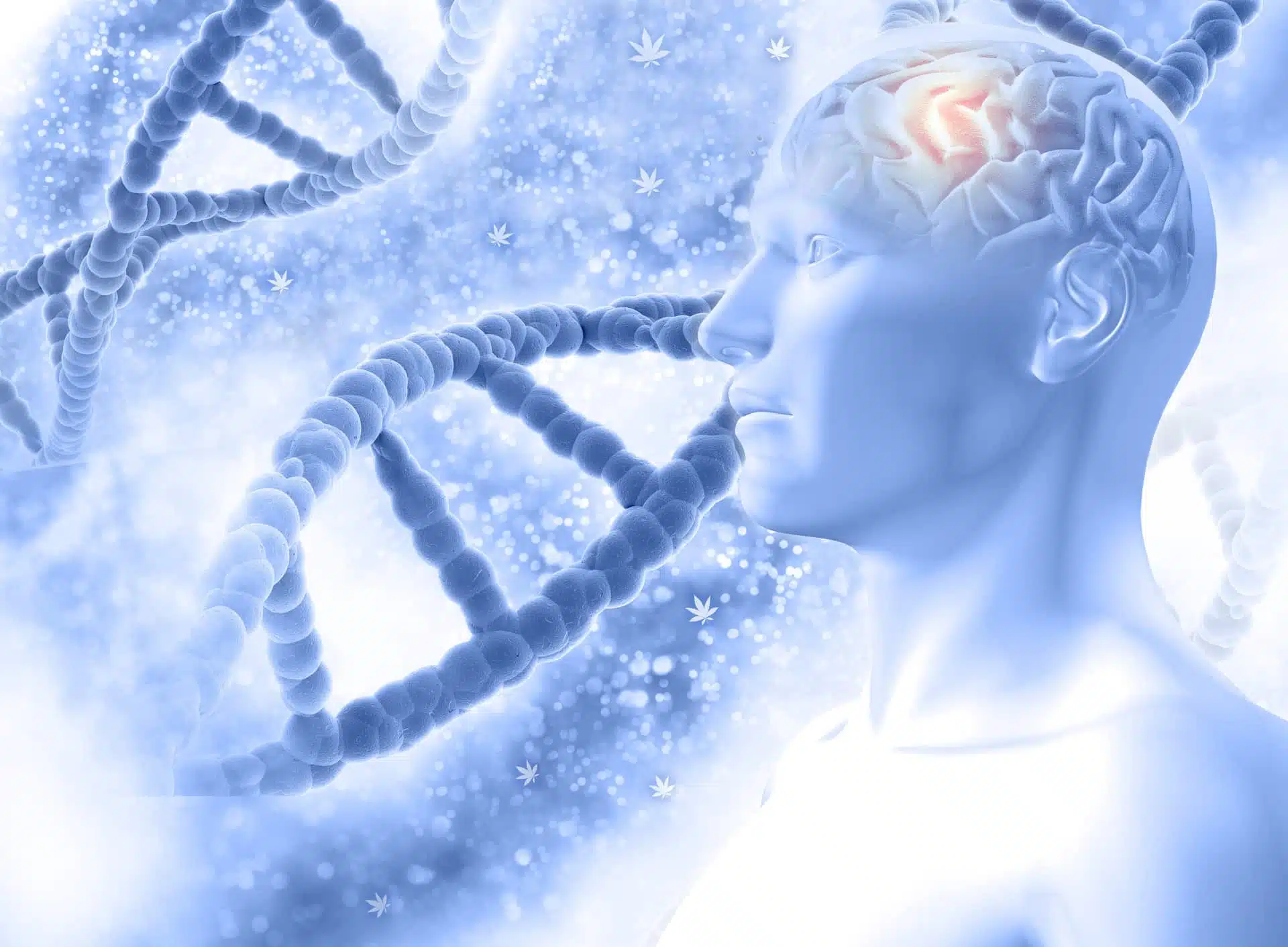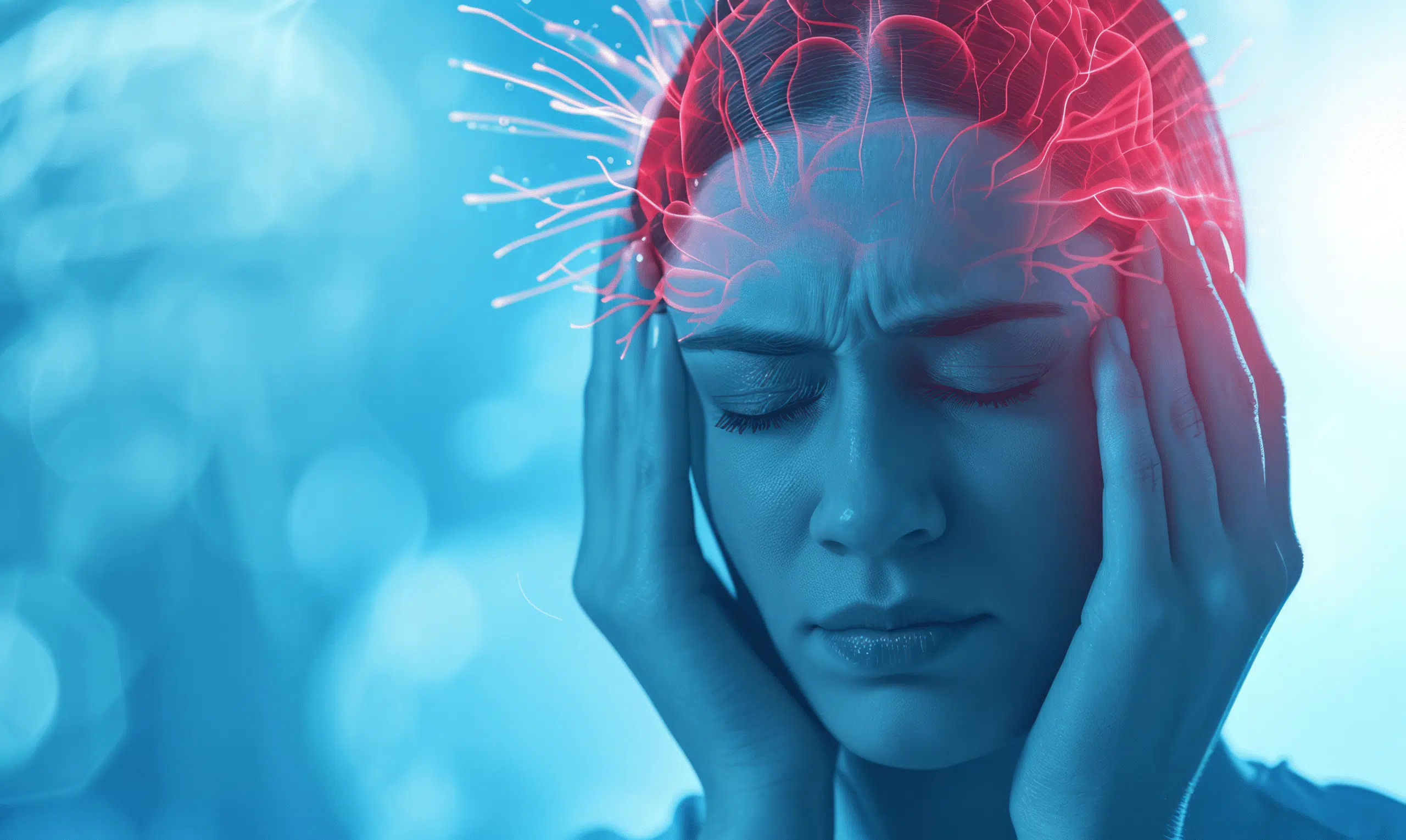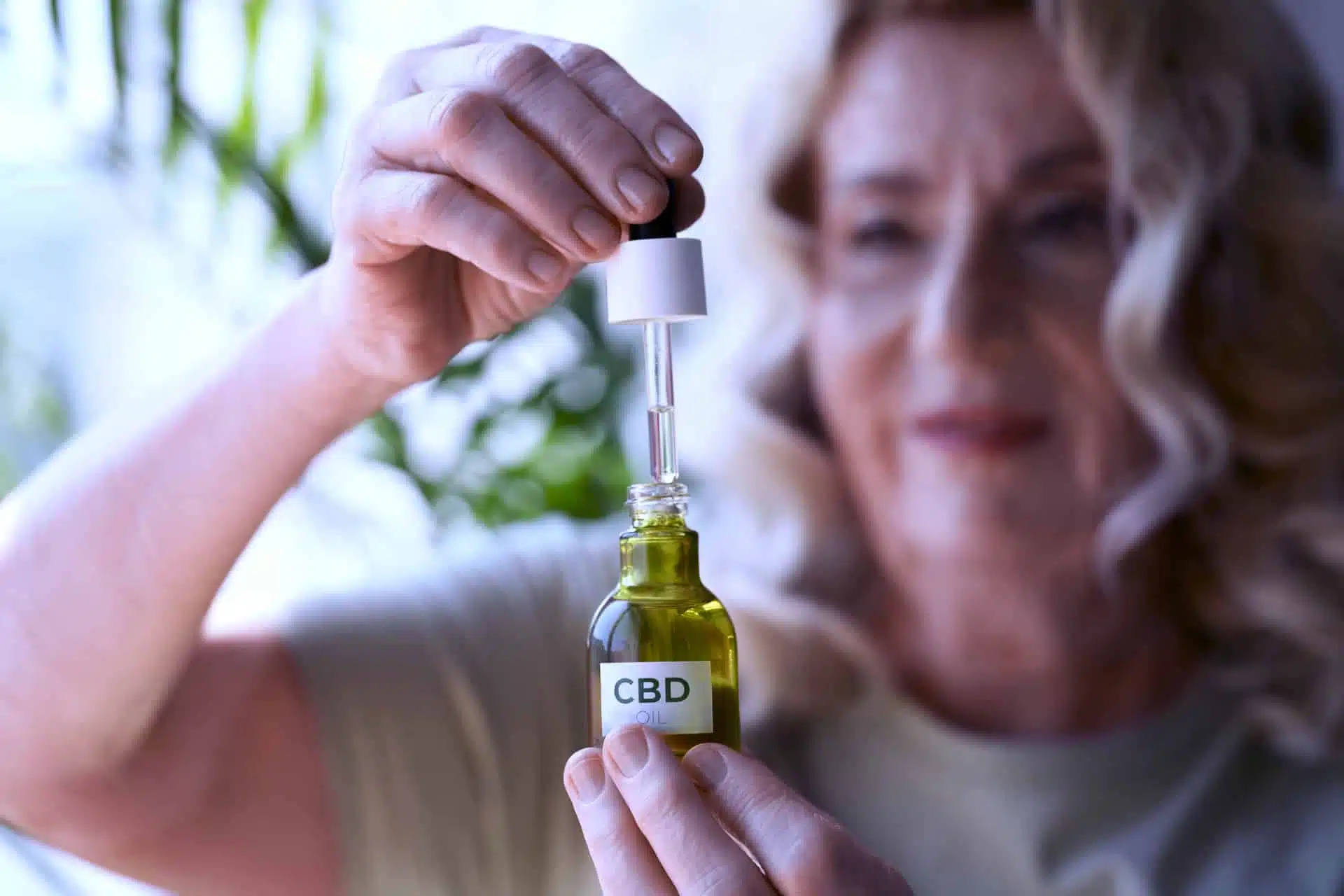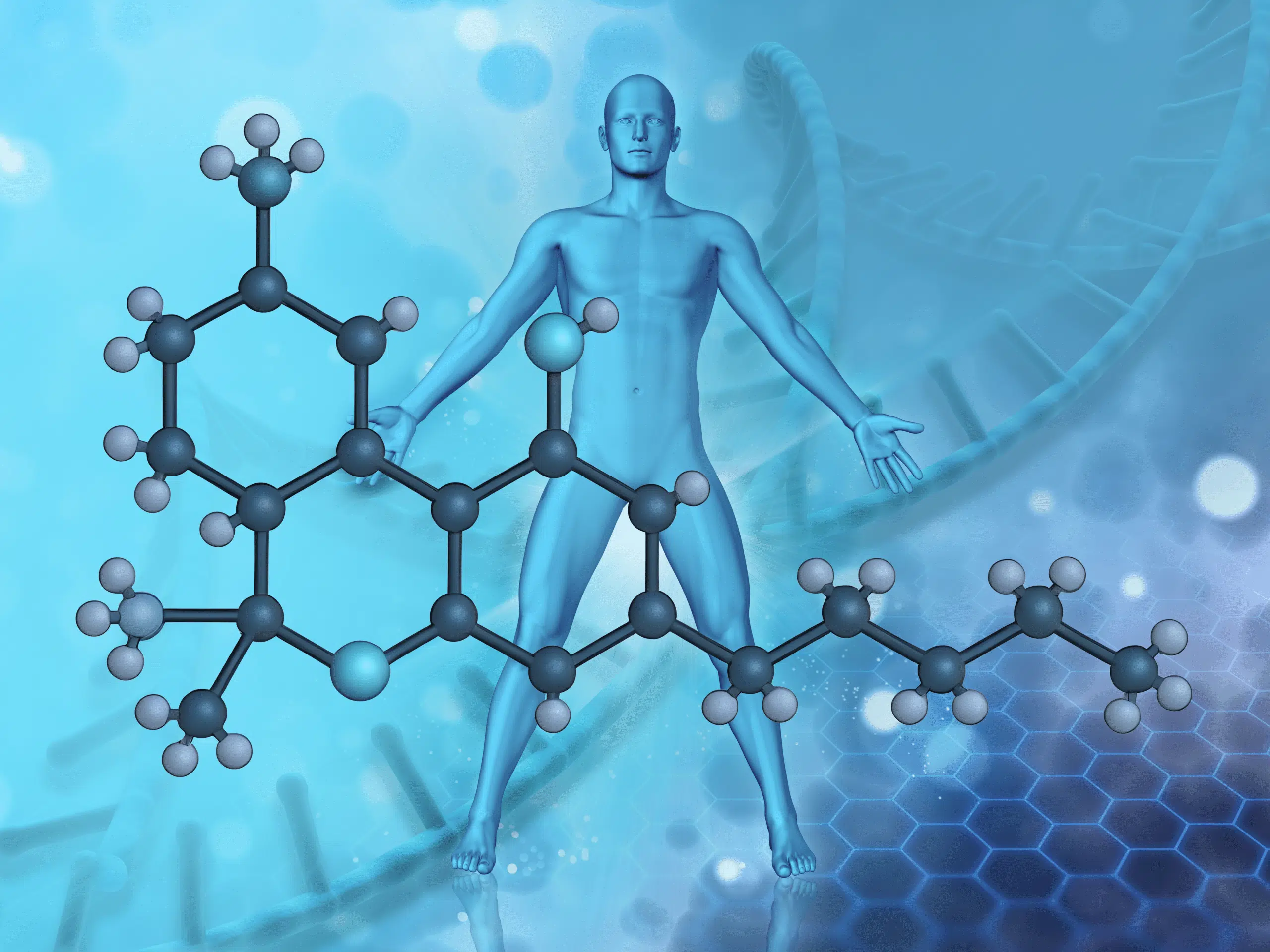Share
Womens Health and Medical Cannabis: Addressing Menstrual Pain and Symptoms

Endocannabinoid System: The Key to Understanding Menstrual Pain
The endocannabinoid system is a body network composed of receptors, natural cannabinoids made by the body, and enzymes. It helps control countless mechanisms in our body, like inflammation, pain, appetite, breathing, and metabolism. Recent research shows its importance in the female reproductive system.
The endocannabinoid system has two main types of receptors: CB1 and CB2. CB1 is found in both the central and peripheral nervous systems and affects mood, while CB2 is more in the peripheral nervous system and influences events like cardiovascular and immune function.
Cannabis-based pain medicines interact with this system, potentially providing pain relief. CB2 plays a key role in reducing chronic inflammatory pain. THC affects both CB1 and CB2, while CBD weakens THC’s psychoactive effects. Both THC and CBD also interact with transient receptor potential (TRP), a group of ion channels that are involved in pain signaling, potentially adding to their pain-relieving properties.
Research suggests that CB1 and CB2 receptors are found in the uterus, where they may affect muscle contractions. THC, for example, can relax uterine muscles, which could alleviate menstrual discomfort.
The endocannabinoid system plays a vital role in influencing gynecological pain and associated disorders, with a particular focus on conditions like endometriosis.
In conditions like endometriosis, there are changes in ECS activity, such as increased levels of endocannabinoids in the body and reduced expression of CB1 receptors in affected areas. This dysregulation may contribute to the pain experienced in endometriosis and other reproductive issues.
Endocannabinoids and cannabinoids, like THC from cannabis plants, have shown promise in relieving pain through various mechanisms. They can reduce neural pain signals and inflammation by activating CB1 and CB2 receptors. CB2 activation can specifically inhibit proinflammatory signaling and alleviate inflammatory and neuropathic pain.
Pain in conditions like endometriosis is complex, involving nociceptive, inflammatory, and neuropathic mechanisms, alongside psychological factors like anxiety and devastating pain.
However, while cannabinoids show promise in managing gynecological pain, more research is needed to fully understand their efficacy and safety. Recent changes in cannabis regulations have facilitated broader scientific research in this area, offering hope for improved pain management in conditions like endometriosis.
In summary, cannabis-based medicines interact with the body’s EC system to potentially reduce pain by affecting various receptors and channels.
Understanding menstrual pain: A closer look at dysmenorrhea
Menstrual pain, known as dysmenorrhea, is a common issue among adolescent girls, affecting anywhere from 50% to 95% of them worldwide.
Primary dysmenorrhea, identified by cramp-like lower abdominal pain that can extend to the lower back and thighs, occurs without any underlying pelvic condition. Usually beginning about six months after a person’s first period and coming back with each ovulation cycle, this discomfort can last from 8 to 72 hours, hitting its peak during the first and second days of the menstrual period because of higher prostaglandin levels.
Symptoms of primary dysmenorrhea can be severe, including nausea, vomiting, diarrhea, lower back pain, migraines, dizziness, fatigue, insomnia, and sometimes fainting and fever. These symptoms result from prostaglandins affecting smooth muscles, intensifying the pain and discomfort during menstruation. The seriousness of symptoms is often linked to factors like early menstruation onset, prolonged periods, and heavy flow, underscoring the need for effective strategies to manage both pain and associated symptoms.
The typical treatment involves anti-inflammatory drugs, but they often need to be given at higher doses to work effectively, leading to potential side effects like stomach problems and gut issues.
Cannabinoids, which have been used historically by women to ease menstrual pain, target the ECS, which plays a role in both pain and the reproductive system. The ECS has receptors called CB1 and CB2, which can interact with cannabinoids from hemp to reduce inflammation. These receptors are found throughout the uterine tissue, making them a good target for cannabinoids to ease pain. Research suggests that using cannabinoids in this way might offer relief from menstrual pain without the side effects of traditional treatments.
Although menstrual hygiene products have seen advancements such as tampons, there’s still a need for enhancement. Some women encounter discomfort and side effects like vaginal dryness or irritation from these products.
A new idea involves CBD-infused tampons, which could offer pain relief with fewer side effects compared to anti-inflammatory drugs. These tampons have undergone rigorous safety testing, meeting FDA standards to confirm their safety for use.
This study aims to explore how effective and user-friendly CBD-infused tampons are as an alternative treatment for menstrual pain.

Monthly cycle: Exploring the suffering from period pain
Impact on Daily Life
Menstrual pain, known as dysmenorrhea, can significantly disrupt daily activities, affecting both school and work attendance. In a study conducted in Portugal, 8.1% of girls reported missing school or work due to menstrual pain, with daily activities impacted in a staggering 65.7% of cases. Despite these challenges, only 27.9% sought medical help. Dysmenorrhea not only affects academic performance, including concentration and participation in sports and social activities, but also influences pain tolerance and disrupts sleep patterns. According to the National Sleep Foundation’s Women and Sleep Poll, menstrual pain disturbs sleep during the first days of menstruation for many women, with 28% reporting disrupted sleep due to pain.
Identifying the Cause
It’s crucial to accurately diagnose the cause of menstrual pain before attributing it solely to primary dysmenorrhea. Secondary dysmenorrhea, which is associated with underlying pelvic conditions, often presents with symptoms appearing later than primary dysmenorrhea, typically more than two years after menarche. This type of dysmenorrhea may be accompanied by other gynecological symptoms, such as abnormal uterine bleeding, and the pain may persist beyond menstruation. Endometriosis and adenomyosis are common causes of secondary dysmenorrhea, which are described by the presence of endometrial tissue outside the uterus or within the myometrium, respectively.
Diagnosing Menstrual Pain
To properly evaluate menstrual pain, a comprehensive clinical history and physical examination are essential to rule out pelvic diseases. The clinical history should cover various aspects, including menstrual history, pain characteristics, previous treatments, family history of dysmenorrhea, sexual history, and a review of systems. Pelvic examinations are recommended for sexually active adolescents, women with severe pain or activity limitations, and cases where initial treatments have failed. These examinations involve inspecting the external genital area, conducting a speculum examination to assess for anatomical abnormalities or signs of infection, and performing a bimanual exam to evaluate the uterus and surrounding structures for any abnormalities or masses suggestive of underlying conditions like endometriosis or fibroids.
In cases where pelvic disease is suspected based on history and physical examination, further investigations such as transvaginal ultrasound, magnetic resonance imaging, and possibly laparoscopy may be required to determine the underlying causes of secondary dysmenorrhea.
Medical cannabis as a therapeutic solution for menstrual pain
Non-steroidal anti-inflammatory drugs (NSAIDs) are often the first choice for treating dysmenorrhea. These drugs, introduced in 1969, revolutionized pain management by making anti-inflammatory medications widely accessible. NSAIDs act by inhibiting cyclo-oxygenase (COX), an enzyme involved in prostaglandin synthesis. By reducing prostaglandin levels, NSAIDs decrease uterine contractions, thus alleviating discomfort.
Studies have shown that starting NSAID treatment 1–2 days before menstruation can enhance effectiveness. However, NSAIDs may cause adverse effects such as gastrointestinal issues, headaches, and drowsiness, with a failure rate estimated at 20%–25%.
Medical cannabis has gained attention as a potential therapeutic solution for menstrual pain, offering an alternative to traditional treatments like NSAIDs and contraceptives. Cannabis contains compounds called cannabinoids, notably tetrahydrocannabinol and cannabidiol, which interact with the body’s endocannabinoid system to modulate pain perception and inflammation.
One way cannabis may alleviate menstrual pain is by reducing the release of prostaglandins, which are implicated in uterine contractions and associated discomfort. THC, the psychoactive component of cannabis, has been shown to have analgesic properties, potentially dulling the sensation of pain. CBD, on the other hand, has anti-inflammatory effects, which could help alleviate the underlying inflammation contributing to menstrual pain.
Moreover, cannabis may offer benefits beyond pain relief. Many women experience symptoms like nausea, headaches, and mood swings during menstruation, which cannabis may help alleviate due to its antiemetic, analgesic, and anxiolytic properties. Additionally, some studies suggest that cannabis can improve sleep quality, which is often disrupted by menstrual pain.
Importantly, medical cannabis may be particularly appealing for women who do not respond well to or cannot tolerate traditional treatments like NSAIDs or hormonal contraceptives. While NSAIDs can cause gastrointestinal issues and other side effects, and hormonal contraceptives may carry risks like venous thrombosis, cannabis may offer a safer alternative for some individuals.
However, it’s crucial to consider the potential uncertainties surrounding medical cannabis use. Additionally, regulations and accessibility vary widely, and more research is needed to fully understand the efficacy, safety, and appropriate dosing of cannabis for menstrual pain.
In conclusion, medical cannabis shows promise as a therapeutic option for menstrual pain, offering potential benefits in pain relief, inflammation reduction, and symptom management. While it may present advantages for individuals who do not respond well to conventional treatments, careful consideration of risks and uncertainties is necessary before incorporating cannabis into menstrual pain management strategies.
Dosing relief: Finding the right balance with medical cannabis for menstrual pain
When considering medical cannabis for managing menstrual pain, it’s essential to consult with a healthcare professional knowledgeable about its use. They can provide guidance upon selecting the right products and dosage tailored to individual needs. Medical cannabis products containing both THC and CBD, or predominantly CBD, have shown promise in relieving menstrual pain due to their anti-inflammatory and analgesic properties. Topical products like creams or patches applied directly to the lower abdomen can offer localized relief from cramps. Alternatively, oral products such as capsules, tinctures, or edibles can provide systemic pain relief.
The appropriate dosage of medical cannabis varies depending on factors like the individual’s tolerance, body weight, metabolism, and the specific product used. Starting with a low dose and gradually increasing as needed is recommended to minimize potential side effects and determine the optimal dosage for symptom relief. Additionally, considering the THC:CBD ratio is important, as higher THC concentrations may cause psychoactive effects, while higher CBD concentrations may offer more subtle relief without intoxication.
Ultimately, working closely with a healthcare provider experienced in medical cannabis can help ensure safe and effective use for managing menstrual pain. They can provide personalized recommendations based on individual medical history and treatment goals.

Menstrual pain: traditional therapeutics
The main aim of treating menstrual pain is to provide effective relief while improving quality of life. Treatment options for primary dysmenorrhea include pharmacological, non-pharmacological, and surgical interventions.
Pharmacological Treatments
Nonsteroidal Anti-Inflammatory Drugs (NSAIDs): These drugs are the first line of treatment for menstrual pain. They work by reducing prostaglandin production, thus decreasing uterine contractions and menstrual volume. NSAIDs are most effective when taken before the onset of symptoms and continued for three days. Although generally well-tolerated, they may cause gastrointestinal symptoms like nausea and heartburn.
Hormonal Contraceptives: Combined oral contraceptives, progestin-only pills, and hormonal devices like intrauterine levonorgestrel-releasing devices (IUS) are used to suppress ovulation and reduce menstrual flow, thereby alleviating dysmenorrhea. Continuous use is often more effective than cyclic use.
Other Medications: Tocolytics like nitric oxide and calcium channel blockers, vitamins, and omega-3 fatty acids have shown promise in relieving menstrual pain. Although further research is needed to establish their effectiveness and safety.
Non-Pharmacological Treatments
Lifestyle Changes: Adopting a healthy lifestyle with proper nutrition, regular exercise, smoking cessation, and limited alcohol consumption can help alleviate menstrual pain.
Topical Heat: Applying heat to the lower abdomen can provide effective and low-cost relief from menstrual cramps.
Acupuncture and Acupressure: These alternative therapies may offer relief from menstrual pain by stimulating nerve fibers and releasing endorphins and serotonin, although further research is needed to confirm their effectiveness.
Surgical Intervention
Surgery is rarely considered and only for severe cases refractory to conventional therapy. In select cases, procedures like laparoscopic uterosacral nerve ablation (LUNA), presacral neurectomy (PSN), and hysterectomy may be considered, but more research is needed to establish their safety and efficacy.
Overall, the treatment approach for menstrual pain should be individualized based on the patient’s symptoms, medical history, and preferences, to provide effective pain relief and improve quality of life.
Strategies for managing menstrual pain and enhancing well-being
To manage menstrual pain and enhance overall well-being, a comprehensive approach is necessary. Alongside traditional treatments like NSAIDs and hormonal contraceptives, integrating strategies such as lifestyle adjustments, stress management techniques, and alternative therapies can offer holistic relief. Medical cannabis emerges as a potential adjunct therapy for menstrual pain, thanks to its analgesic and anti-inflammatory properties driven by cannabinoids THC and CBD.
Lifestyle modifications play a crucial role in alleviating menstrual discomfort. Regular exercise, balanced nutrition, hydration, and adequate sleep are key components. Avoiding triggers like caffeine, alcohol, and tobacco can also help reduce symptoms. Stress management techniques, such as deep breathing, meditation, yoga, or tai chi, are effective in mitigating stress-induced exacerbation of menstrual pain.
Heat therapy, through heating pads, warm baths, or hot water bottles, provides immediate relief by relaxing uterine muscles. Acupuncture and acupressure, traditional Chinese therapies, promote blood flow and release endorphins, alleviating menstrual pain. Medical cannabis, particularly CBD-rich formulations, shows promise in reducing inflammation and pain, although further research on optimal dosage and long-term effects is needed.
Mind-body practices like mindfulness meditation and progressive muscle relaxation aid may help in pain management, by promoting relaxation. Certain dietary supplements like magnesium, omega-3 fatty acids, and vitamin E have been studied for their potential to reduce menstrual pain, but evidence supporting their effectiveness is limited. It’s crucial to consult with a healthcare provider before incorporating any supplementation regimen.
By integrating these strategies into a personalized menstrual pain management plan, individuals can find relief and improve their overall well-being. However, caution should be exercised when considering medical cannabis, ensuring guidance from a healthcare provider, especially regarding legal and safety considerations.
Sources:
Sinclair J, et al. The Place of Cannabinoids in the Treatment of Gynecological Pain. Drugs. 2023; 83:1571–1579. doi: 10.1007/s40265-023-01951-z.
Ferretti ML. The effects of cannabidiol isolate on menstrual-related symptoms. 2022. Masters Theses, 2020-current. 145. https://commons.lib.jmu.edu/masters202029/145.
Sinclair J, et al. "Should I Inhale?"-Perceptions, Barriers, and Drivers for Medicinal Cannabis Use amongst Australian Women with Primary Dysmenorrhoea: A Qualitative Study. Int J Environ Res Public Health. 2022 Jan 29;19(3):1536. doi: 10.3390/ijerph19031536.
Marcu I, Gee A, Lynn B. Cannabinoids and chronic pelvic pain in women: Focus on endometriosis. J Endometr Pelvic Pain Disord. 2021; 13(3) 155–165. doi: 10.1177/22840265211011277.
Milanova V et al. Efficacy and usability of a cannabidiol-infused tampon for the relief of primary dysmenorrhea. JEUD. 2024; 5 :100057.
Sinclair J et al. The Place of Cannabinoids in the Treatment of Gynecological Pain. Drugs. 2023 Nov;83(17):1571-1579. doi: 10.1007/s40265-023-01951-z.
Sanchez AM et al. Elevated Systemic Levels of Endocannabinoids and Related Mediators Across the Menstrual Cycle in Women With Endometriosis. Reproductive Sciences. 2016;23(8):1071-1079. doi:10.1177/1933719116630414
Thomasa A et al. Association of endocannabinoids with pain in endometriosis. PAIN. 2022;163(1):p 193-203. doi: 10.1097/j.pain.0000000000002333
Scotchie JG et al. Endocannabinoid regulation in human endometrium across the menstrual cycle. Reprod Sci. 2015 Jan;22(1):113-23. doi: 10.1177/1933719114533730.
Guimarães I, Póvoa AM. Primary Dysmenorrhea: Assessment and Treatment. Dismenorreia primária: Avaliação e tratamento. Rev Bras Ginecol Obstet. 2020;42(8):501-507. doi:10.1055/s-0040-1712131


